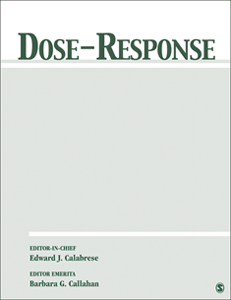Part 3 of 3 Parts (Please read Parts 1 and 2 first)
The NCRPM meta-study involved dozens of experts from academia, government and the nuclear industry. Twenty-nine contemporary scientific studies on the effects of low-dose radiation were analyzed. The conclusion of the meta-study reaffirmed that even low dose of radiation should be avoided if possible. While the correlation between excessive radiation exposure and many types of cancer is clear, evidence of danger from low-dose exposure is not as clear but is still present. Some studies have shown that people subjected to repeated X-rays have a linear cancer risk related to the number of X-rays.
The meta-study concluded that there was no conclusive evidence that could refute the linear no-threshold model of radiation danger that has been the orthodox opinion for decades. The NRC will include the meta-study in their deliberations on the relaxation of radiation dose standards.
Unfortunately, the meta-study conclusions did not end the radiation dose danger debate because the relaxation of regulations is major goal of the Trump administration. If the NRC, dominated by Republicans, does relax radiation dose standards, this would please many in the Trump administration and many among the Republican in Congress. The relaxation of radiation dose standards has been making some progress beyond the debate at the NRC.
Last fall, the House Republicans held a hearing on the EPA proposal to reduce radiation standards which would save the nuclear industry billions of dollars. One of the supporters of radiation hormesis at the hearing was Edward Calabrese who is a professor of toxicology at the University of Massachusetts at Amherst. He has a long association with industries trying to ease government regulation. He runs a center funded by R.J. Reynolds, Dow-Corning, ExxonMobil and utility companies. He is also the founder of the Dose Response journal mentioned above.
When Scott Pruitt left the EPA under a cloud of corruption charges, the proposal to change the radiation standards was shelved but it will likely be reconsidered in 2020. Another bill aimed at relaxing radiation exposure standards was passed by the House of Representatives in 2017. A companion bill was also introduced in the Senate but the fact that the House is now in control of the Democrats suggests that these bills will have a tough time making it to the president’s desk.
Janet McCabe is an environmental lawyer who was the head of the division of the EPA responsible for radiation and air pollution protection under the Obama administration. She compares the supporters of radiation hormesis with climate deniers who work for corporations which would profit enormously from changes in government regulation. She said that she was not surprised that a fringe idea like radiation hormesis was fining traction with the Trump administration.
A major problem with assessing cancer risk from radiation exposure is the fact that it can take decades for the effects of radiation to show up in a human body. With all the other modern factors that can cause cancer, it can be difficult to pin down the cause of any particular cancer. It is worth noting that if the proponents of radiation hormesis are wrong, it could take decades for their mistake to show up in the damaged health of recipients of low dose of radiation. With respect to dangers of radiation exposure, it is best to err on the side of caution.
